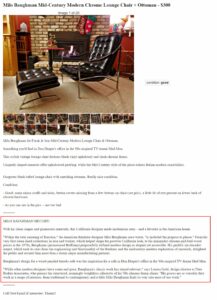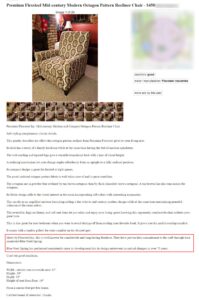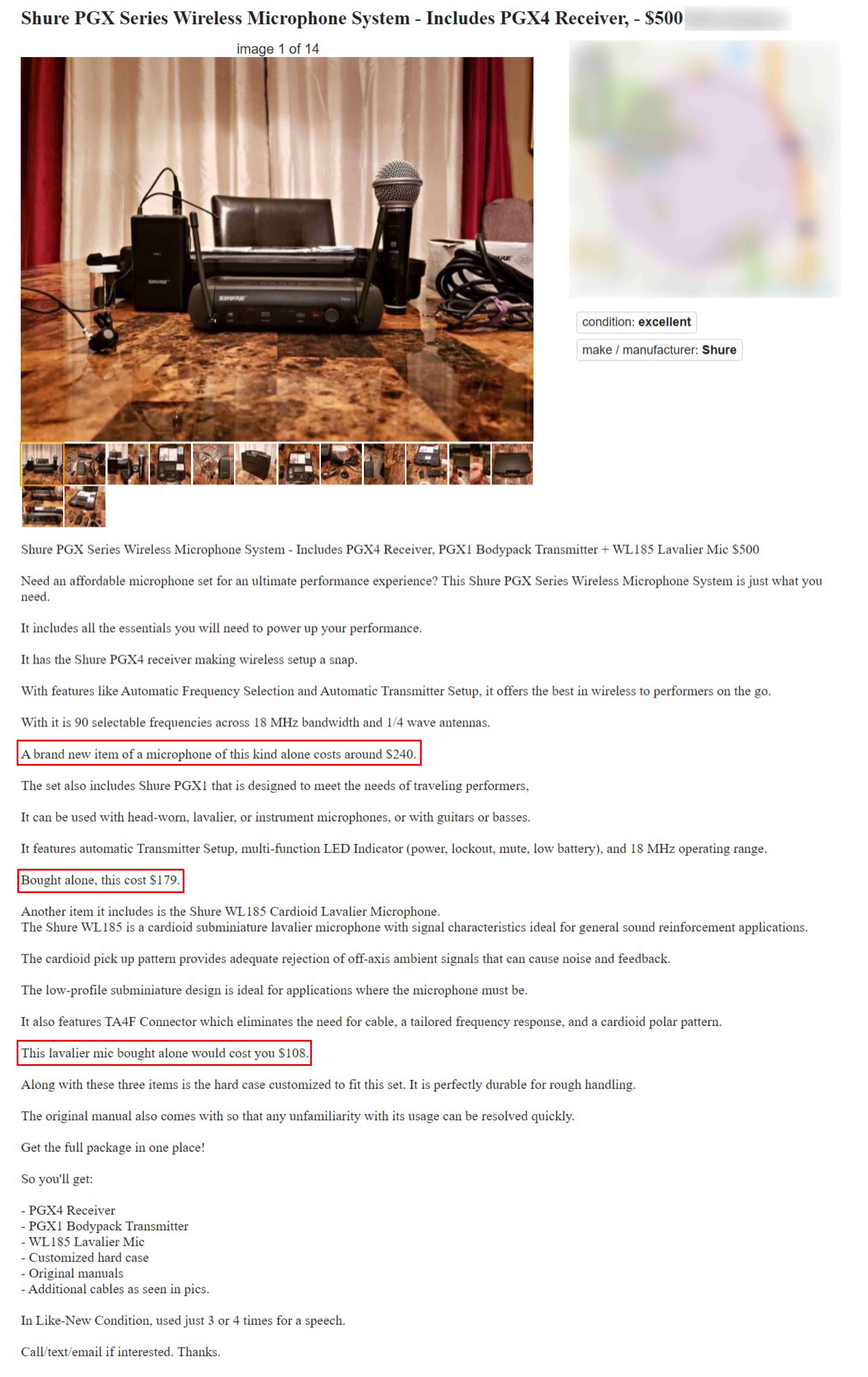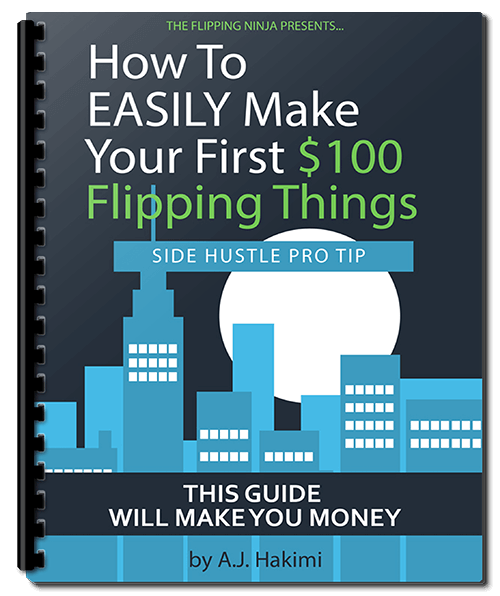4 Psychology Tips to Earn Faster Profit Flipping
Flipping is simple—but not so easy.
People who blindly try out flipping find out that it’s not as easy as it is advertised to be. They realize that there are many things to consider like what item to buy, or how to negotiate to get the lowest price, or how to take images that seduce buyers, or how to write ad copy that sells, or probably the most important question of all, what if nobody buys it?
All these things, when pointed out, sound like there is too much to take into consideration. If you think that, you’re probably better off not flipping—it’s not for everybody. But if you take the time to learn these skills (you don’t have to be super-good at it), and have the guts to take the risks to hone them, then the profit that you will make will outweigh all your costs by at least twofold. And if you’re ambitious, the sky’s the limit.
In this article, you will learn four psychology-based tips that will help your flipping game to level up, and therefore, earn more profit.
Tip #1
The Halo Makes Your World Glow
In the early 1920s, an American Psychologist named Edward Thorndike went to a bunch of US Military commanding officers and asked them to rate their subordinates in terms of certain traits like attractiveness, intellect, leadership skills, and other personal qualities. What he found in this study is that the subordinates that the officers rated higher in attractiveness were also rated higher in the other traits like being smarter, a better leader, and have better character.
This phenomenon is called the Halo Effect or sometimes referred to as the “What is beautiful is also good” principle.
How does this apply to flipping?
The Halo Effect doesn’t only apply to how we perceive other people, it also applies to how we perceive things. Ever gone to the grocery store looking for apples, and you selectively pick ones that look healthy and juicy with no bruises or rotten marks? Or ever seen McDonald’s or Burger King ads on TV that show delicious displays of burgers and fries, and find that you want to go out and buy one for yourself? Or stumbled upon a commercial that showed a gorgeous car cruising on the road with breathtaking scenery going on in the background?
These things attract something deep inside us. Humans have always been drawn to beauty, and we are more likely to perceive beautiful things as good or functional. Especially if we are going to pay for it.
So the point is this: presentation is key.
When you flip things online you will be posting photos of your items. And the very first photo your customer sees will be a huge factor that will convince them to buy it. If you are selling a piece of furniture, then present it in a well-lit, organized, and cozy living room. If you are selling a mug or a cup, then put it on a coffee table on a patio and shoot it in sunlight. Your imagination will be your limit. Be creative, and present your items in a way that even you would be seduced into buying.
Tip #2
Honesty Is The Best Policy—Especially When Making Money
The golden rule. Everyone is familiar with it. It is ancient and is still being repeated to this day because of how fundamental it is to how we operate with others. No one likes being lied to—not even liars.
If you lie in your advertising you might get away with it. Once, sure. Twice, maybe. But not for long. In the world of social media where everyone can call out anyone and rally for justice, it has become even more important that we stay true to this old maxim. But this section isn’t about the immorality of dishonesty. It’s about honesty as a tool to make money.
Customers are smart. It is a mandatory thing you need to assume when you write your ad copy. I don’t mean smart in the specialized technical sense—not everyone has that. But I mean sharp. Your customers can tell when they are being lied to. It will show one way or another. And they don’t like it. But the same is true with the opposite.
We all appreciate it when someone is being truthful. Your customers will also be able to tell if your ad is honest. And the more you bring that honesty into your ad the more effective it will be. Don’t put all the spotlight on its features if your product has defects—acknowledge and point them out. Believe me, they’ll thank you for it and as a result you might earn their trust. And trust goes a long way when you conduct business.
I noticed something when I acknowledged the flaws of the items I’m flipping through their ad copy. The customers who bought them were more satisfied. And some even sold quickly.
The truth is a great tool—use it.
Tip #3
Value and Value Justification
Ultimately, consumers want value out of a product. And they want to make sure the hard-earned money they exchange for it is justified.
When talking about price for a product or service, value is always on the back of the customer’s mind. But here’s the thing, value is relative. Let me explain.
I believe that an item for sale has two prices: the actual price and the perceived price. The actual price is what the item is being sold for. The perceived price is what the customer believes the item should be sold for—for whatever arbitrary or rational reason.
Let’s use luxury items to illustrate the point. Luxury items usually have a higher demand than supply, therefore, they are commonly expensive. When a company that sells luxury items sells them for considerably less than their competitors, with the same or better features, what do you think will happen?
Well, the company, based on price alone, will very likely sell a lot.
As a flipper, you can use this to your advantage. All you have to do is to increase their perceived price. There are plenty of ways to do this.
It can be as simple as putting the brand name of your item in the headline of your ad—if the brand is reputable, and communicating the brand or company’s history or background.
Here’s an example below:

Or here’s another example that’s just 2 lines. It doesn’t have to be anything crazy either — even a little background helps educate people on what they’re buying:

If it is not as well known, you could search online how much it is sold for and compare the two prices in your ad copy.
Here’s an example of a Shure PGX Series Wireless Microphone System combo I flipped, highlighting original prices for different components of the package:
![]()
![]()

Or if the product is unique or not so common, you can increase the perceived price by showing the customer its rarity or highlight its features.
But it brings with it problems. If your customer wasn’t easily convinced of the cheap price or the value the item gives them, they probably need justification. They might ask themselves, “It’s cheaper than I thought it would be, but can I really justify this purchase?”
To help your customers justify their purchase you should resolve all their objections through your ad. You could point out that it will save them money, or that it will prevent health issues like back pain, or boost their social status like make them more attractive. Whatever the justification is, it must be tailored to your prospect’s wants and needs.
Tip #4
Bargaining
When flipping, you’ll probably encounter a lot of bargaining. You’re either the one on the receiving end of it or the one starting it. It’s always best to avoid these situations altogether and just find already cheap items or hope your customer doesn’t bargain. But knowing how to bargain will surely save you a lot of money in the future if you learn how to apply it with your flipping.
Check out a podcast episode I did where I talked about my Craigslist Negotiating Secrets.
Chris Voss, former FBI international hostage negotiator, wrote in his book Never Split the Difference a simple bargaining strategy that he personally used for years in high-stakes ransom negotiations with kidnappers. It’s called the Ackerman system.
Below are its six stages:
- Set your target price on the item you want to buy.
- Make your initial offer at 65 percent of your target price. And wait for their counter-offer.
- If there’s no deal, raise your price by 20 percent. Make sure to use empathy every time they make their counter-offer. You could say “I’m sorry, but I just can’t do it at that price,” then give your increased offer, “Okay, does [85% of target price] sound like a bad deal?”
- If it is still a no-deal, raise your price by 10 percent. Also, you may act like you are reluctant as you try and come up with a higher price. Use a varied version of “No” when rejecting their counter-offer, like the one above.
- If still no deal, raise by another 5 percent.
- Finally, if they are still unyielding, the last offer should be an odd number (closest to your target price), and you should be prepared to include some non-monetary compensation (that they do not want) to show them you’re at your limit.
You could say, “Look, I only have $98.27 here, how about I add this cool pendant I’m wearing with the money to compensate—does that sound like a bad deal?”
I know this sounds weird, but if you did the steps right, it is highly likely that your customer will acquiesce and just take your money.
A keynote to remember before you start giving your offer is giving an extremely low ball offer will only breed resentment from your counterpart. So make sure you do your research on the item’s market value so you can have a reasonable price to offer.
Employ this strategy when you find an item you’d like to buy. This will come extremely helpful especially when you’ve leveled up your flipping game to bigger items with bigger profits like cars.
Conclusion
We deal with other people all the time. And when it comes to trade, including flipping, it is critical that you know what psychological triggers affect people’s behaviors. More so when all the influences you have are photos and words. There are plenty of other psychological triggers out there that haven’t been discussed in this blog, and I’m sure if you look hard enough you might find them.
However, if you want to fully dive into not only learning how to make money flipping things but also learn psychological triggers and tactics to sell more, you can check out The Flipping Ninja Course where I give people the tools I’ve used to help me transition from my 9-to-5 job to a full-time flipper, and eventually becoming The Flipping Ninja.
What did you think about this blog post? I would love to read your feedback. If you’d like to read more psychology-based blogs, feel free to let me know by putting a comment below. Otherwise…
Use these triggers wisely, and have fun flipping things!


